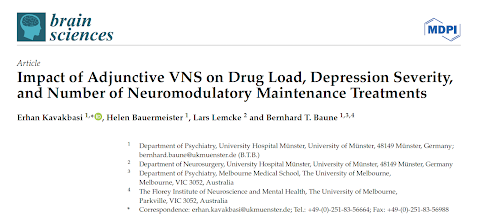Catatonia Case from Iraq
Out on PubMed, from a clinician in Iraq, is this case report:
Role of Cariprazine in Managing and Preventing Refractory Catatonia: A Case Study.
Cureus. 2024 Sep 30;16(9):e70538. doi: 10.7759/cureus.70538. eCollection 2024 Sep. PMID: 39479081
The abstract is copied below:
This case study explores the management of a 22-year-old male patient diagnosed with recurrent refractory catatonia, a neuropsychiatric condition characterized by motor, behavioral, and autonomic disturbances often associated with bipolar disorder. Despite comprehensive investigations, including normal results in tests such as complete blood count (CBC), liver function tests (LFT), thyroid function tests (TFT), renal function tests (RFT), C-reactive protein (CRP), creatine kinase (CKP), and serum electrolytes, the patient's condition persisted. Initial treatments with conventional therapies, such as benzodiazepines, proved unsuccessful. However, the introduction of cariprazine, an atypical antipsychotic, combined with electroconvulsive therapy (ECT), resulted in significant improvement. This case highlights the challenges of managing treatment-resistant catatonia and suggests cariprazine's potential role in preventing catatonic relapses when other therapies fail. The patient's sustained remission underscores the need for further investigation into cariprazine as a viable option for refractory cases.
The case report is here:

Here is a catatonia case report from Iraq. The clinical description is good, and it seems that the patient really did have catatonia. Few details of the ECT course are given, and it is unclear how much of the good outcome was due to ECT (probably all) versus the addition of the atypical antipsychotic.
In any case, ECT reports from Iqaq are rare, and we give kudos to the author for this contribution.






Comments
Post a Comment